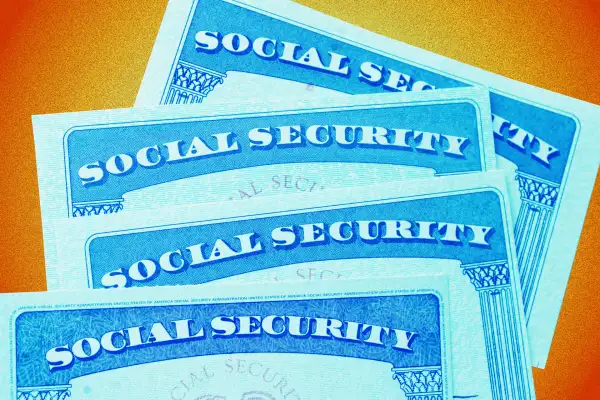5 Proposals to 'Fix' Social Security — and How They Could Affect Your Benefits

More than 70 million Americans receive monthly Social Security checks. Over 180 million current workers are paying into the system and expect benefits down the line. But the program is running out of money.
So, naturally, proposals are swirling on both sides of the political aisle to make changes to Social Security as the clock ticks toward a projected 2035 depletion date.
Experts recommend addressing the problem sooner rather than later, and 87% of Americans agree with that sentiment. Unfortunately, there’s been little political consensus to take any concrete steps to fix the program, mainly because all of the ideas being floated are unpopular among one group or another.
Politicians are especially unlikely in an election year to promote plans that involve raising taxes, increasing the retirement age for Social Security recipients or reducing retirement income. Yet voters will continue to hear about possible changes to Social Security through the upcoming election cycle and beyond — because the program is critical to millions, and the funding problems cannot be ignored forever.
Donald Trump vs. Kamala Harris on Social Security
Without a legislative solution, Social Security trust fund reserves are on track to be depleted just over a decade from now. At that point, only 83% of benefits would be paid to recipients. That would amount to a cut of about $16,500 per year for a typical dual-income couple, according to a September estimate from the Committee for a Responsible Federal Budget.
On the campaign trail, Vice President Kamala Harris and former President Donald Trump have been united in at least one promise on Social Security: pledging not to cut anyone’s benefits.
“The problem is that neither of them really has a plan to pay for the benefits,” says Andrew Biggs, a senior fellow at the right-leaning American Enterprise Institute.
Congress’ inaction and the lack of solutions from the two nominees are concerning because the issue has been neglected for too long already, he says.
Instead of a plan to properly fund Social Security, Trump has announced he wants to eliminate federal taxes on benefits and openly disagrees with House Republicans who want to raise the retirement age. “I am going to leave Social Security. I'm not raising the years; I'm not raising the age. I will be saving Social Security,” Trump said at an August news conference.
As for how the country is going to continue paying full Social Security benefits, voters mainly only hear about vague ideas from the presidential campaigns. For example, Trump said, “we are a country that has so many different ways to make money” when addressing Social Security's underfunding, while vice presidential nominee JD Vance has offered the unrealistic suggestion that increasing labor participation could somehow solve the problem.
Democrats, when asked about Social Security, typically say they want to strengthen the program and tend to support raising taxes on high earners. The Harris campaign hasn’t come out with a specific plan to address the funding shortfall, but according to her campaign website, Harris will "strengthen Social Security and Medicare for the long haul by making millionaires and billionaires pay their fair share in taxes."
Beyond the presidential campaigns, members of Congress, think tanks and economists have their own ideas about how to change or fix Social Security.
5 Social Security proposals (and how they'd affect benefits)
Here are five of the possible changes to Social Security — and how they would work:
Raise the retirement age
In their latest budget proposal, House Republicans suggest increasing the retirement age for future retirees.
The retirement age, which determines when people can claim full Social Security benefits, was last increased by a 1983 law that gradually raised it from 65 to 67 over a period of 22 years.
Even though both Trump and Harris oppose raising the retirement age, Biggs says the public may need to brace for this to happen, as it’s one of the most obvious levers Congress could use to address the funding issue.
House Republicans emphasize that people who are in or near retirement wouldn’t be affected. Still, the public backlash to the idea of working longer would likely be enormous.
The budget proposal from House Republicans doesn't specify a new retirement age, but gradually raising it to 69 is one of the most common suggestions in Social Security reform discussions. Unfortunately, increasing the retirement age to 69 would only fix about 20% to 30% of the looming shortfall.
“The funding gap is a lot bigger than people think it is, so you would need the retirement age, plus a whole range of other things” to close the gap, Biggs says.
End federal taxes on Social Security
In campaign speeches, Trump has been promoting a plan to eliminate federal income taxes on Social Security benefits, which are currently paid by about 40% of beneficiaries — those who have more than $25,000 of combined income. “To help seniors on fixed incomes who are suffering the ravages of inflation, there will be no tax on Social Security,” he said at an August rally in North Carolina.
Rep. Thomas Massie, R-Ky., has a bill that would do exactly this, but he’s introduced it six times and it hasn’t gone anywhere. The bill also discourages Congress from levying higher taxes to come up with revenues.
Social Security benefits haven’t always been taxed. The tax was created in 1983 and expanded in 1993. However, opponents of Trump’s idea say it would be reckless to end the taxation without making other changes to offset the loss of revenues.
While most of the major proposed changes to Social Security revolve around shoring up the trust funds, ending income taxes on benefits would do the opposite. According to the Committee for a Responsible Federal Budget, this move would increase deficits by $1.6 trillion to $1.8 trillion through 2035 and increase Social Security’s 75-year shortfall by 25%.
Separately, a group of Democratic lawmakers have signed on to a bill that would end federal income taxes on benefits, but it’s part of a larger proposal that would also significantly increase how much of someone's wages are subject to Social Security taxes in a year.
Trump's pledge is part of a set of tax-cutting promises that also includes ending taxes on tips and ending taxes on overtime.
Raise taxes on high earners
Over the years, Democratic lawmakers and left-leaning groups have put forward multiple proposals to strengthen Social Security by raising taxes on high earners.
The bill that has seen the most support is the Social Security 2100 Act, which more than 200 House Democrats gave their support to after it was introduced in 2021. Among other changes, the bill would expand Social Security payroll taxes to include income above $400,000.
"Right now, the cap on Social Security contributions means a CEO making $10 million a year would only pay into Social Security for the first week of the year," Sen. Sheldon Whitehouse, D-R.I., said at a Sept. 11 hearing. "A schoolteacher or nurse, however, pays into the program with every single paycheck. That’s not fair."
Under the current system, only the first $168,600 of an individual's earnings are subject to the Social Security payroll tax, which is 6.2% of wages for the individual and another 6.2% for their employer.
The Democrats’ plan would create a “type of a doughnut hole,” Aaron Cirksena, founder and CEO of MDRN Capital, explains. “You're taxed up to $168,600, then there isn't tax from $168,600 to $400,000, but then from $400,000 and anything above — or up to whatever limit they choose — is getting taxed again.”
Enacting the Social Security 2100 Act would move the projected depletion date back by about 32 years, according to a 2023 analysis by Stephen Goss, chief actuary at the Social Security Administration.
In theory, Democrats could also try to extend the solvency of Social Security by increasing the payroll tax rate for everyone, but that path looks less likely at the moment. (Harris has maintained Biden’s pledge that the government will not raise taxes on anyone earning less than $400,000.)
Payroll taxes would have to be increased from 12.4% to 15.7% on workers at all income levels to continue paying full benefits, according to a report from the Social Security trustees.
Reduce cost of living adjustments (COLAs)
Social Security benefits are adjusted annually based on a government index called the CPI-W, which tracks monthly price changes in goods and services for urban wage earners and clerical workers. Basically, the COLA — cost-of-living adjustment — boosts Social Security payments every year so they can keep up with inflation.
Democrats including President Joe Biden support switching to a more generous COLA formula based on a different inflation tracker, the CPI-E. Meanwhile, some conservatives want to reduce COLAs to ease the Social Security funding deficit.
Unlike increasing the retirement age, which would make an impact in the future, reducing COLAs would have a near-immediate effect as the change would affect current and future beneficiaries.
Reducing COLAs by half a percentage point would make up about 29% of the long-term funding gap, Biggs says.
“[Democrats] claim that we should pay higher COLAs,” Biggs says. “At the end of the day, though, when this thing is going broke, I won't be surprised if we end up reducing COLAs.”
Cirksena adds that Congress could also opt to reduce the COLA by tying it to the chain-weighted CPI index, an inflation measure that accounts for shifts in consumer behavior and tends to grow slower than the CPI-W. This change would amount to an estimated 0.25 percentage point reduction in the calculated inflation rate, according to the Congressional Budget Office, and that would translate to a lower COLA for Social Security beneficiaries.
Means testing
A means test is a government assessment used to determine an individual's eligibility for a specific program as well as the level of assistance they should receive.
No such test exists for Social Security, which pays benefits to older Americans based on their earnings history.
Cirksena says he wouldn't be surprised to eventually see Democrats show support for some sort of means testing, which could involve reducing benefits for people with higher incomes or net worths. For now, though, most Democrats seem to prefer to increase taxes instead of means testing benefits or cutting payments to the wealthy.
In the past, Republicans, including former President George W. Bush and former Speaker of the House Paul Ryan, have supported reducing benefits for people with greater means, Biggs says.
However, the idea has faded out of the political discussion on the right in more recent years, especially with Trump’s promises not to cut benefits.
More from Money:
When Social Security Recipients Will Get Their Checks in August
Social Security COLA for 2025 Could Be Over 2.6%, According to New Predictions
Boomers Are at Higher Risk of Running Out of Retirement Money Than Younger Workers


